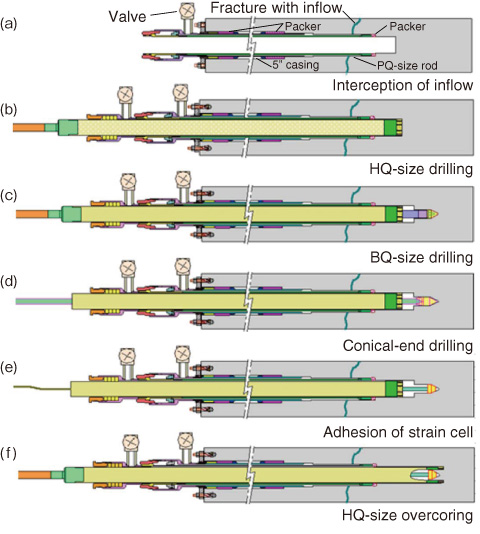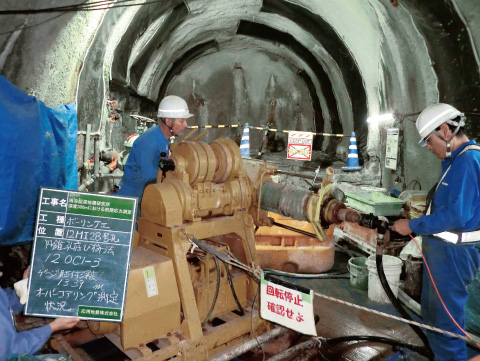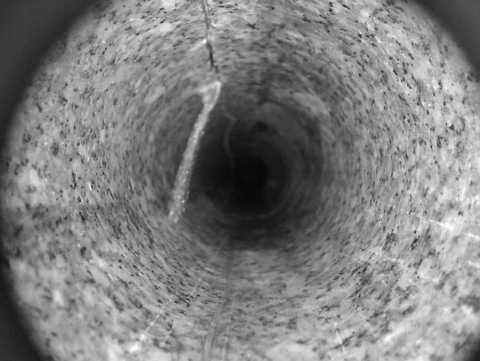
Fig.3-7 Drilling tool to prevent inflow and its measurement procedure

Fig.3-8 Rock stress measurement

Fig.3-9 Groundwater inflow in borehole
The evaluation of in situ rock stress is important in the design and construction of underground structures such as underground power stations and geological disposal facilities for high-level radioactive waste. In fact, in situ stress is recognized as the primary factor in the development of an excavation disturbed zone (EDZ). An EDZ is likely to be less stable than the undisturbed rock mass and to provide higher permeability pathways for groundwater flow near excavations.
Hydraulic fracturing tests in a borehole drilled from the surface and overcoring tests in boreholes drilled from a gallery were used to determine the in situ rock stresses. In 2009, the Japanese Geotechnical Society standardized the techniques used in compact conical-ended borehole overcoring (CCBO). However, the CCBO technique does not work if groundwater is present because water reduces the effective adhesion of the strain cell to the rock. Furthermore, the occurrence of disking at the conical-ended overcore does not allow evaluation of the in situ stress.
As a countermeasure, we developed a tool to prevent groundwater inflow (Fig.3-7) and adapted the tool for use in CCBO in situ stress determination in the GL.-200 m and -300 m galleries at the Mizunami Underground Research Laboratory (Figs.3-8, 3-9). Numerical analysis was used to interpret the stress concentrations around the conical-ended core in this case study. The conclusions are as follows:
(1) The in situ rock stresses were successfully determined using the inflow prevention tool.
(2) Numerical analysis indicates that tensile stress occurred at the ridgeline of the conical-ended overcore and microfractures developed at this measurement point.
(3) This work confirms the importance of determining the borehole orientation with respect to the regional stress fields to reduce the risk of core disking.